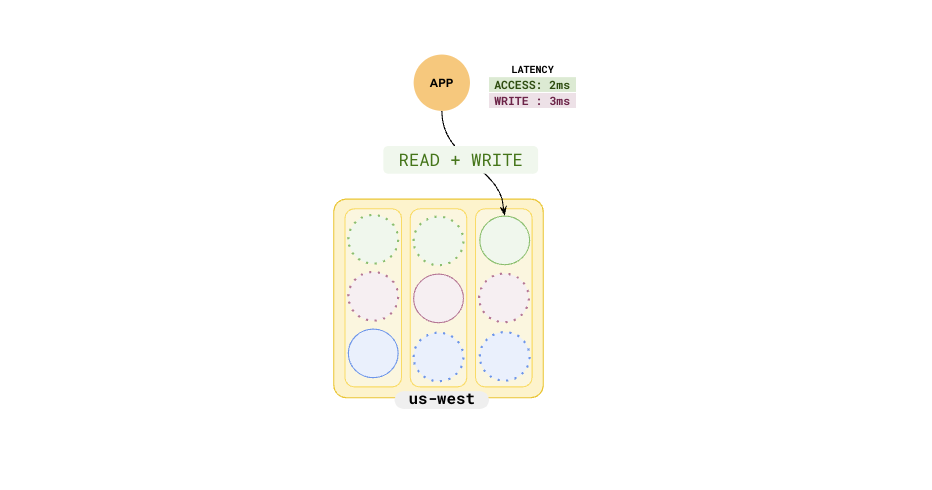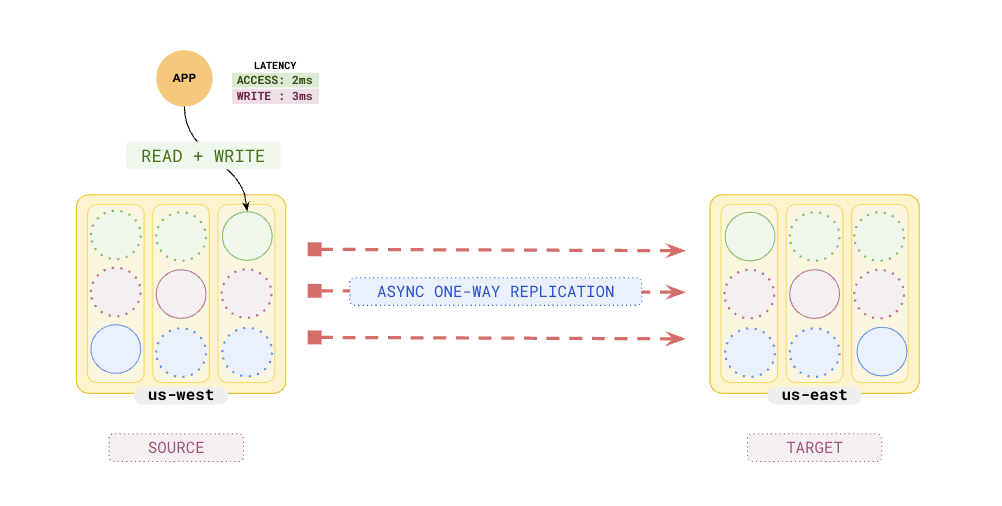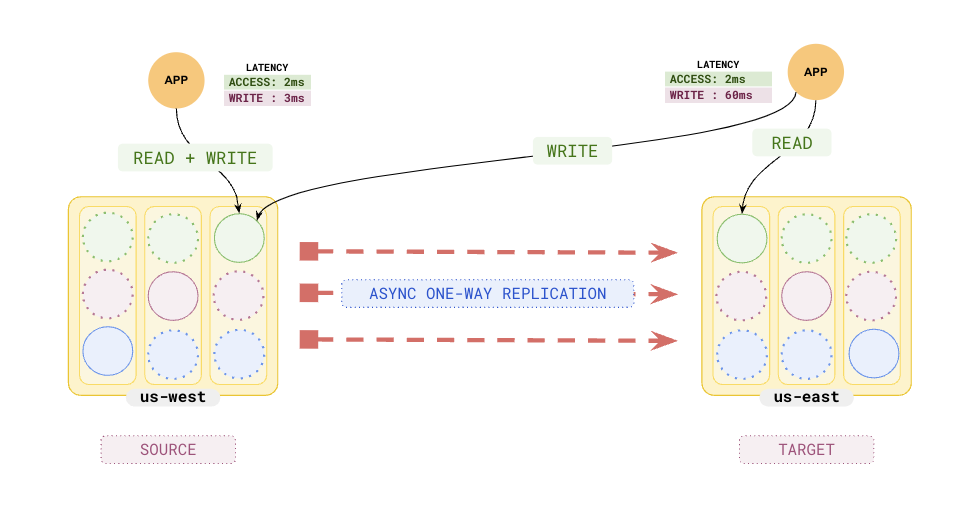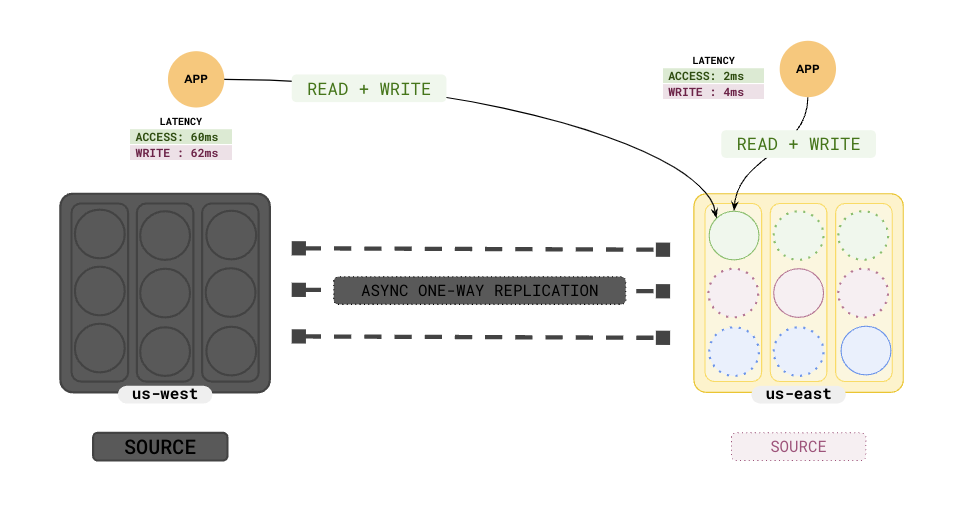Active-active single-master
For applications that run in a single region but need a safety net, you can adopt the Active-Active Single-Master pattern. This involves setting up two clusters in different regions. One cluster actively handles all reads and writes, while asynchronously replicating data to the second cluster. The second cluster can serve transactionally consistent but slightly stale reads. In the event of a failure of the first cluster, the second cluster can be promoted to Primary, a process known as Disaster Recovery. This setup is particularly useful when you have only two regions, or you want to deploy the database in only one region for low latency writes, while maintaining another copy in the other region for failover and low latency reads.
Setup
Setup
To set up a local universe, refer to Set up a local YugabyteDB universe.Setup
To create a universe, refer to Create a multi-zone universe.Suppose you have cluster with a replication factor of 3, and applications deployed in us-west.

This ensures that the reads and writes are in the same region, with the expected low latencies. Because the entire cluster is in a single region, in case of a region failure, you would lose all the data.
Secondary replica cluster
You can set up a secondary cluster in a different region, say us-east, using Transactional xCluster Setup.

The us-east cluster (Standby) is independent of the primary cluster in us-west and the data is populated by asynchronous replication from the us-west cluster (Primary). This means that the read and write latencies of the Primary cluster are not affected, but at the same time, the data is not immediately available on the Standby cluster. The Standby cluster acts as a replica cluster and can take over as Primary in case of a failure.
This can also be used for blue-green deployment testing.
Local reads
Because the second cluster has the same schema and the data (with a short lag), it can serve stale but transactionally consistent reads for local applications.

Writes still have to go to the primary cluster in us-west.
Failover
When the Primary cluster in us-west fails, the Standby cluster in us-east can be promoted to become the primary and can start serving both reads and writes.
